At long last, the tour through Ecuador has come to an end. Last stop, Cuenca.
For those of you who stuck with me through the Quito chaos, sailing 8 days through the Galapagos, and five stops along the Wanderbus circuit, I thank you. While the country of Ecuador is only half the size of Texas, there is much to see here, with enriching cultural experiences that are as varied as the topography. So while it has been a bit of a struggle to get the blog caught up, I wanted to get it all down before the memories began to fade.
While Cuenca was my last stop in Ecuador, it was also the one I was most looking forward to seeing. So the fact that I left it until last was not by design, but rather by the clockwise circuit of the Wanderbus. I was eager to check it out.
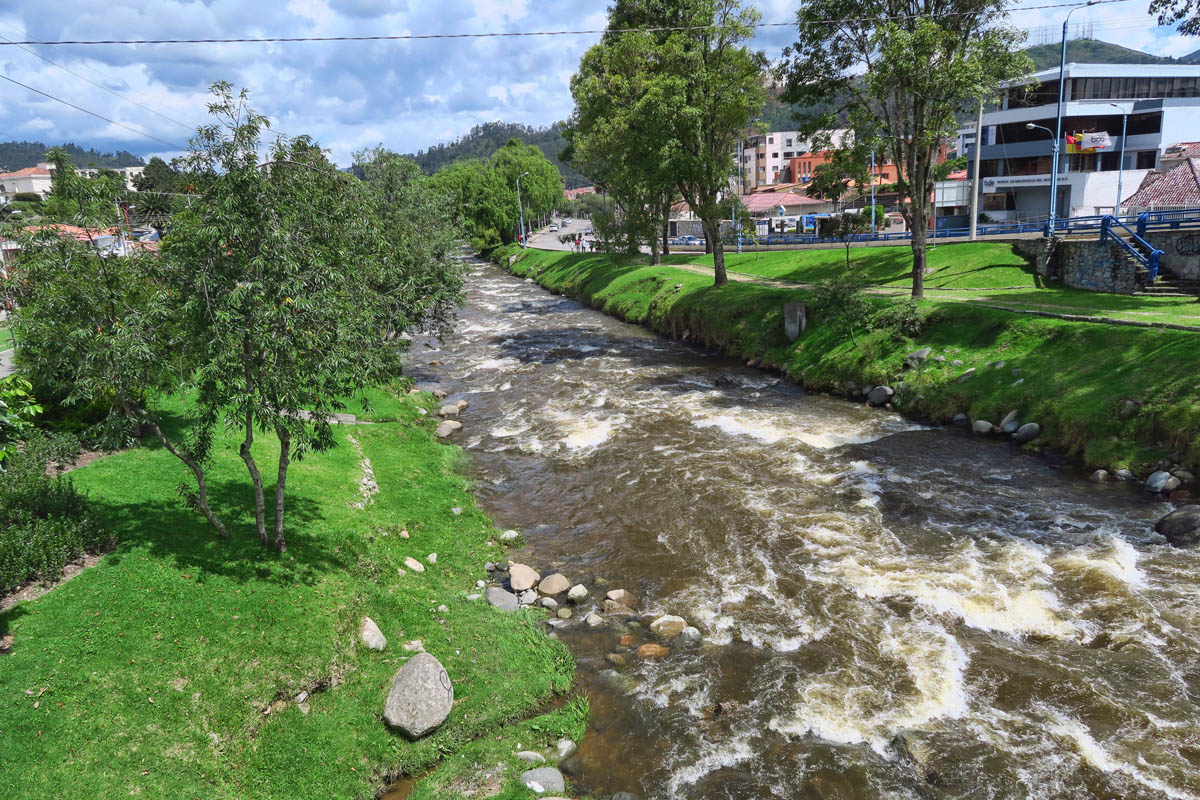
The Tomebamba River runs right through town, eventually merging with the Amazon River, and emptying into the Atlantic Ocean.
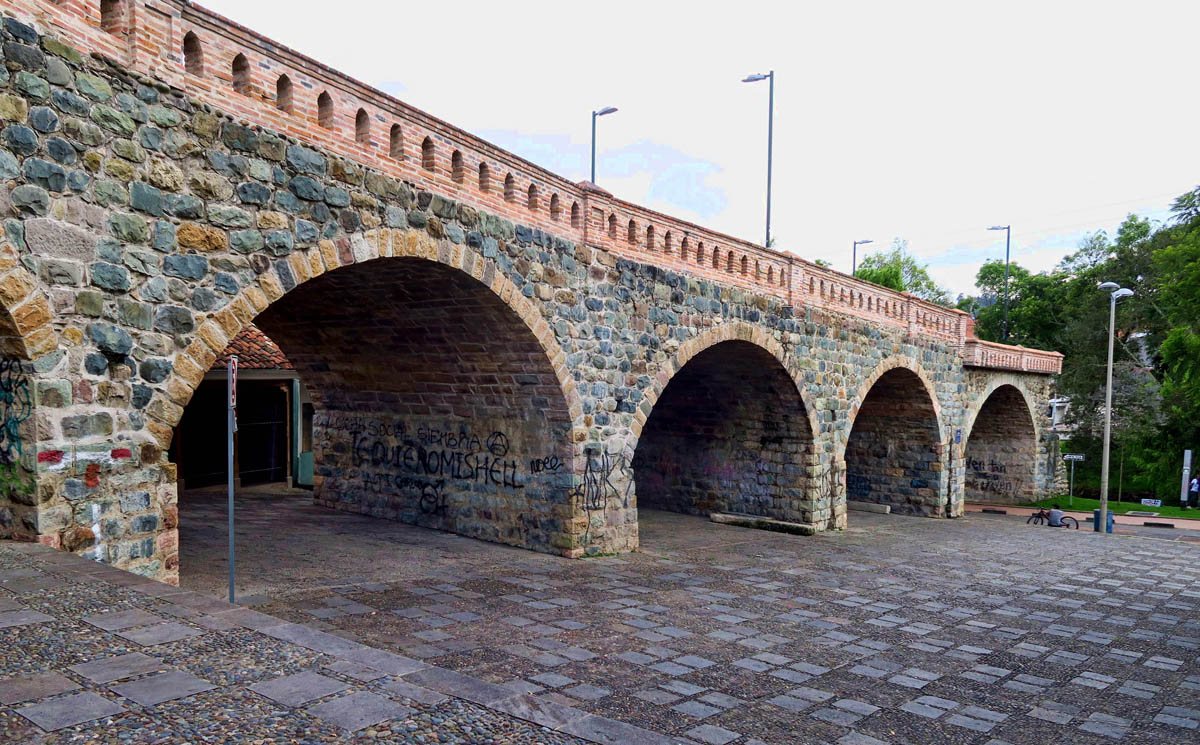
The Puente Roto, or “Broken Bridge” used to span the Tomebamba River until it was washed away in 1950

Now, the Broken Bridge is a tourist attraction, as the end has been bricked up, and serves as a location for art exhibits.
Cuenca is a town where more than just its colonial charm parallels my beloved San Miguel de Allende. The high desert climate produces temperate, spring-like weather year round. Artisans and creative types are drawn here to live. Red tiled roofs and domed churches dot the skyline. And UNESCO has designated both cities as a World Heritage site.
If you have ever contemplated retiring outside of the USA, you have no doubt read the International Living publications ongoing lists of the best places to retire abroad. These articles make Ecuador sound like a regular Shangri La. The articles literally say “Live Like Royalty on Your Social Security.” Cuenca, Ecuador’s third largest city is home to one of the largest expat communities in the country, nearing around 5,000 and growing. So I was curious….
Not that I have any plans to expatriate myself anytime soon mind you, but just like with San Miguel de Allende, home to Mexico’s largest expat community, I am always curious to know what kind of people it attracts…And am I one of those people?

I have this weird passion for collecting photos of Holy Water fonts from churches all over the world. This one has an unusual photobomb. She was still there kneeling in this position after I finished touring the church. Still not sure if it was “scripted.”
I arrive in Cuenca the day after the big Carnavale blow-out, so the town is quiet. Long lines outside the churches remind me it’s Ash Wednesday, so not much is open. I drop off my things at Pepe’s House B&B, and go for a walk along the river to start my exploration of the town. I stop beneath the Puente Roto, aka the “Broken Bridge” which dead ends at the Tomebamba River. The bridge washed away during a flood in 1950 leaving behind only the stone arch approach, now turned tourist attraction.
I sit down beneath the bridge to search through my Lonely Planet Ecuador to figure out what there is to see and do here in Cuenca. After walking for two hours, so far, it’s fallen a bit short of my expectations.
As I am leafing through the pages, a tall, thin woman passes by, then turns around, “Eileen? Oh, sorry, you look like my friend Eileen.” I respond back, “No, but it’s funny, you look familiar to me too.” After a lengthy conversation, I figure out what is familiar about Carol. Turns out, we both worked for the same airline during the same timeframe, and lived within a few miles of each other near Dallas HQ back in the late 70’s. While I didn’t know her personally, she had that elegant stature about her from the golden days of airline travel, back when flight attendants wore uniforms designed my Emilo Pucci and Halston. I didn’t know her, but I knew of her.
I was delighted to have an opportunity to talk to Carol to learn more about expat life in Cuenca, while she was dreaming of a life on the road. It was serendipity, so we booked a lunch date to talk further.

There are a reported 52 churches in Cuenca, all of them beautiful. This one, Iglesia de Todos Santos, believed to be Cuenca’s first church where mass was celebrated in 1540. Beneath it’s newer facade are building materials which include adobe mud-brick and “bahareque,” a mixture of sugar cane, straw, and clay.

But probably the most famous of all Cuenca churches is the “New Cathedral,” or Cathedral of Immaculate Conception. Built of beautiful Italian pink marble, construction took 100 years, beginning in 1885.
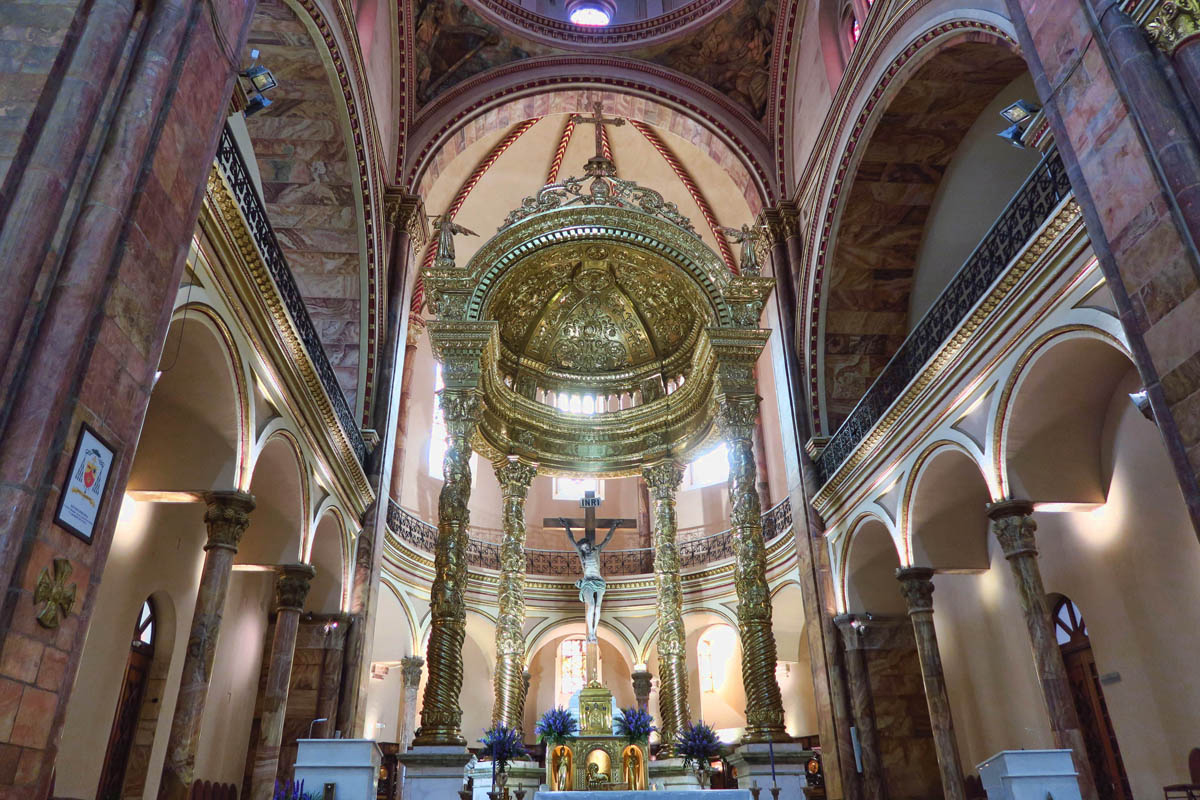
The New Cathedral is in the heart of the old colonial center. Altar piece is modeled after Saint Peters in Rome.

What really sets the New Cathedral apart are its stunning blue tiled domes that can be seen from all over the city.

The beautiful domes covered in blue glazed ceramic tiles from the Czech Republic, are bathed in beautiful blue light at night.

The original architect’s plan for the bell towers is on the right. However, once construction began, it was determined that the structure could not support the towers. So they were “truncated” to the design on the left. Also why there are no bells…
Not knowing where to start, I ask Carol a rather pointed question. “So where’s all the charm I read about in International Living?” To which she responds with a hint of left-over Texas drawl, “Not all that glitters is gold.” I probe further, “You’re not happy here?” “…..hmmmmm, not my dirt.” Carol goes on to tell the other side of International Living, and how it’s mainly a marketing tool for realtors to lure people in.
I ask Carol what she misses most about the USA. I already know the growing list I would like to escape, on top of all the “charms” extolled by International Living magazine. I want to hear the down side. To get a real sense of expat life in Ecuador. It doesn’t take her long to come up with an answer. “I miss geography!” I ask her what she means by this exactly. “You know, wide open spaces! Road trips! Travel!” It seems when one is an expatriate, the travel budget is spent returning back home to visit loved ones, take care of business, and resupply.
There is a “mule service” between Cuenca and the US…fellow expats willing to carry letters, open packages, back and forth for fellow expats. Carol tells me she ordered a Road Atlas via mule service. If she can’t go, at least she can dream. Suddenly, I feel like I can’t breathe.

A visit to the local market, where all kinds of “mote” (the giant hominy I grew to hate) is for sale.

These two women are shelling peas. I ask if I can take their picture for my 90 year old Mom who also loves to shell peas. They couldn’t believe she was still at it!
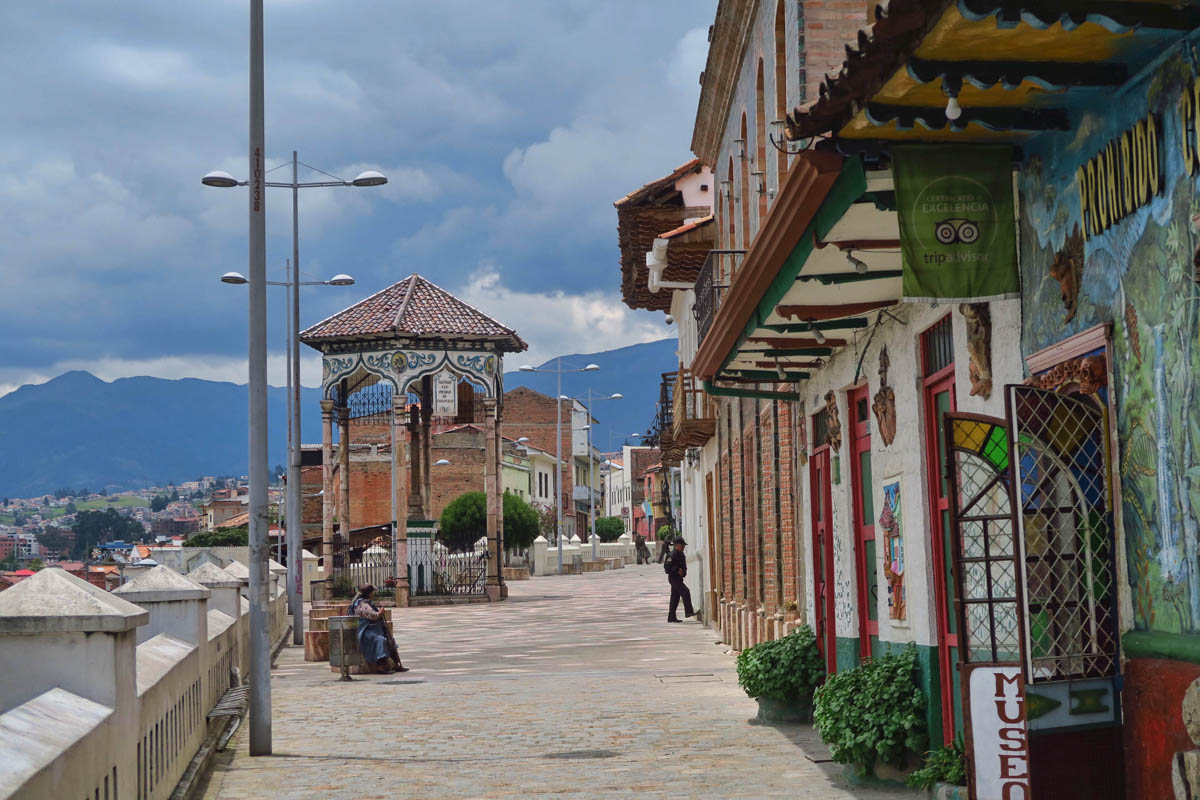
This is difficult to explain but once I went full time in the Winnebago, I all but quit traveling outside the US, save for winters in Mexico. My life-long need for perpetual motion and addiction to jet fuel was being met by the constantly changing landscape from being on the road. Just “living” was taking all my resources (I’m talking brain and body power here, not financial.) I didn’t realize how much I missed traveling internationally until I started packing for Ecuador.
After talking to Carol, I got a sense the same might be true for expat life. Most resources are taken up by sustaining life amidst another culture, assimilating, learning the language, and just getting to the point of comfort in another country. Along a similar vein, I wondered if I would take the stance, “what’s the point of traveling internationally if I’m already ‘international?”
My time with Carol gives me a bit of insight that I had not considered before. If one follows International Living magazine’s promises of “living like royalty,” it’s not enough to merely base your budget on living expenses alone. In other words, don’t just think about “getting there.” One must also make allowances to get back out again. Otherwise, “living like royalty” might end up feeling like living like a Queen in exile.
Before we leave Ecuador, one last tip of the misnamed “Panama Hat.”
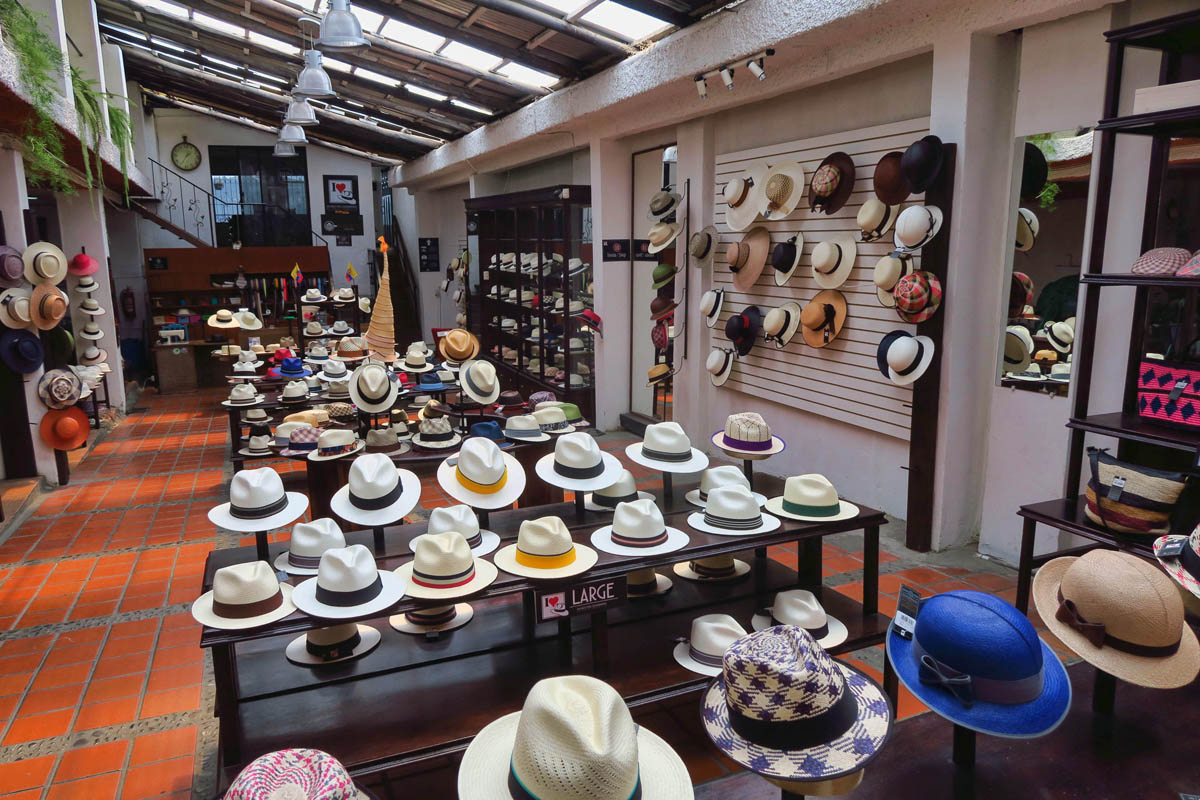
As I mentioned in a previous post, the “Panama Hat”actually originated in Ecuador where it is known as the “Montecristi Hat.”. Cuenca is the largest producer of these hats. While here, I visited a factory where the hats were being made.
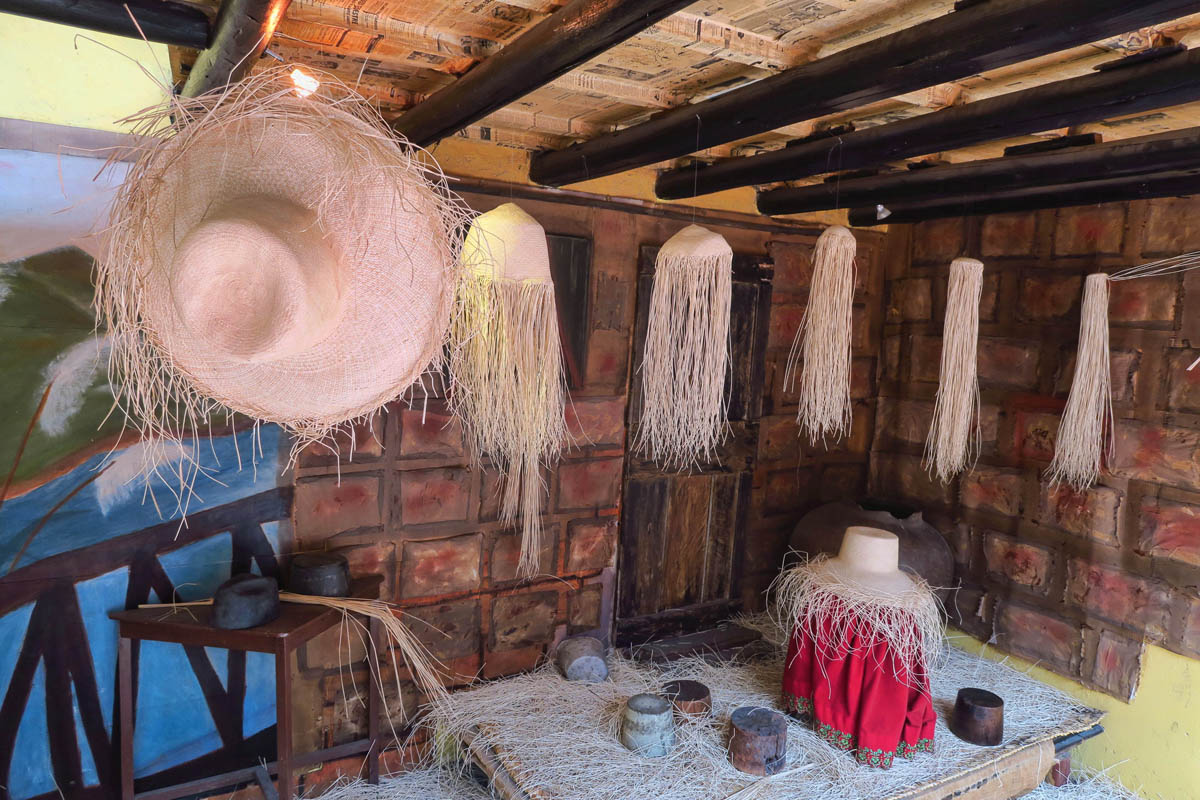
hats were made from the plaited leaves of the Carludovica palmata plant, known locally as the toquilla palm. They are hand-woven with up to 3,000 weaves per square inch. Here are hangings of the hat in various stages.

They are then put into a vat of peroxide (or sulfur) to bleach out the color to the traditional white.






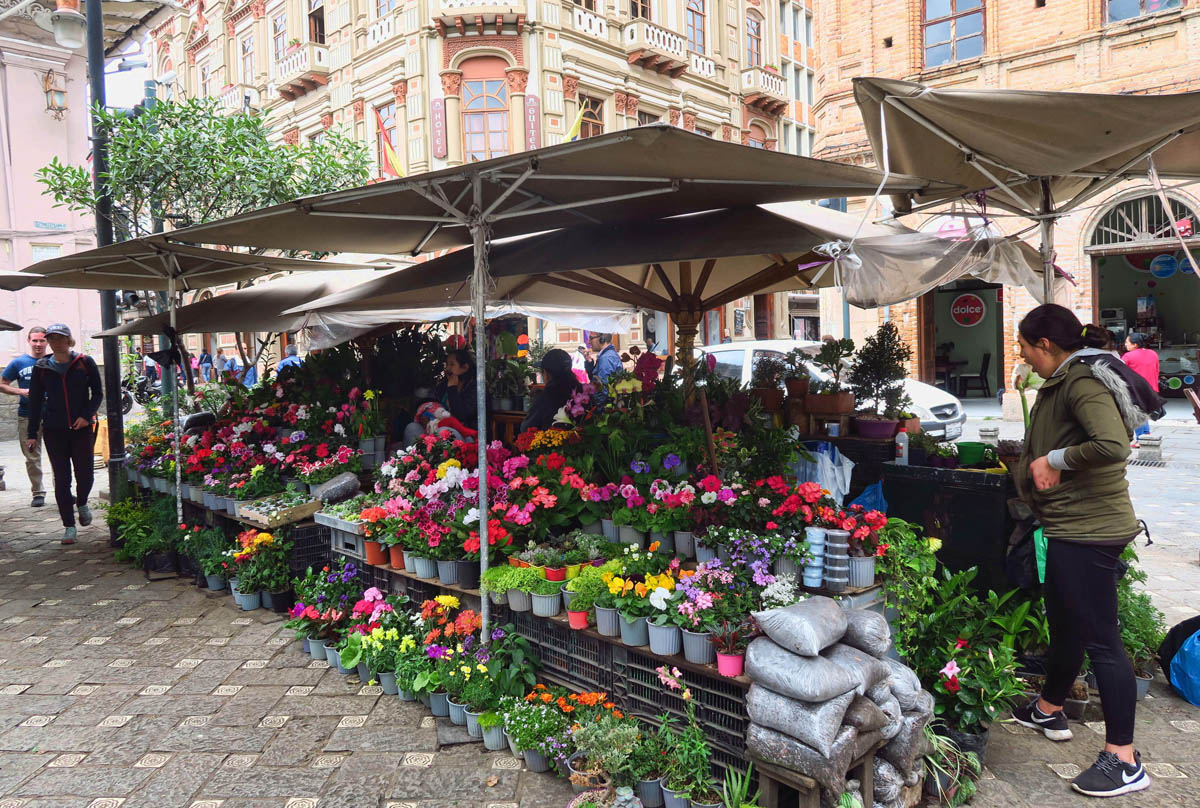
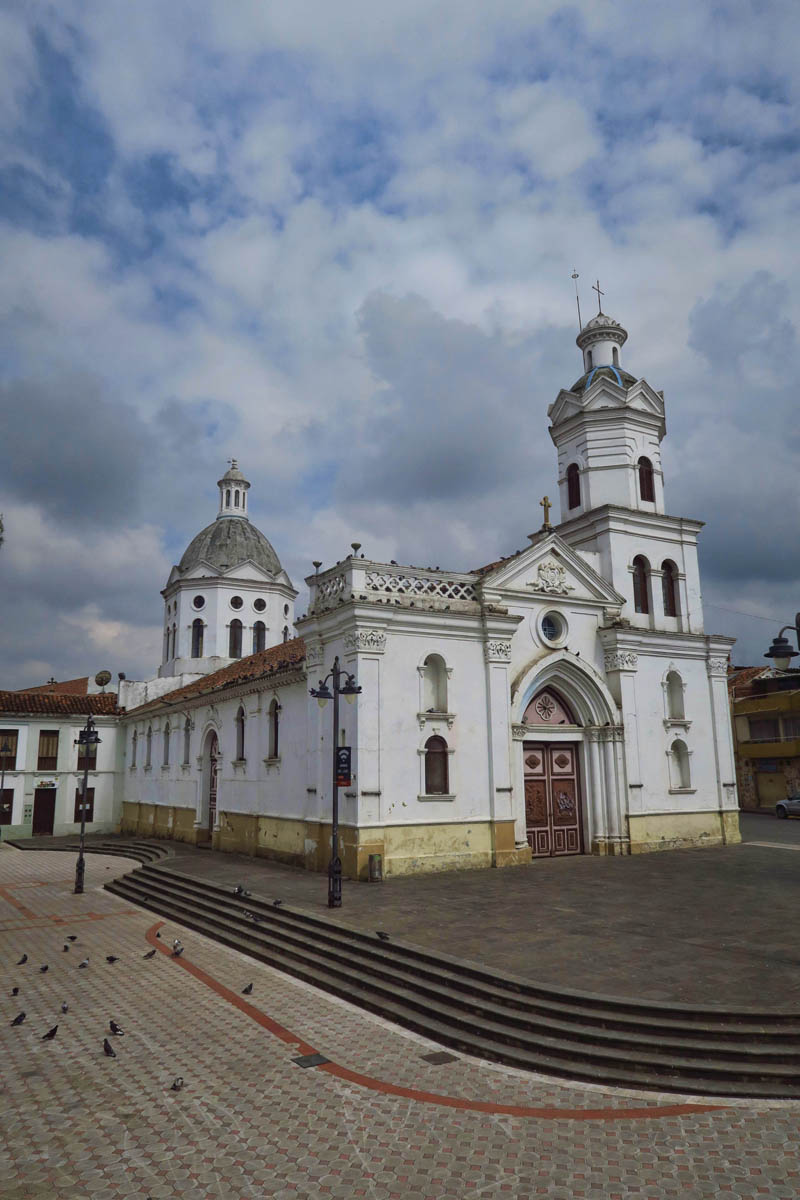
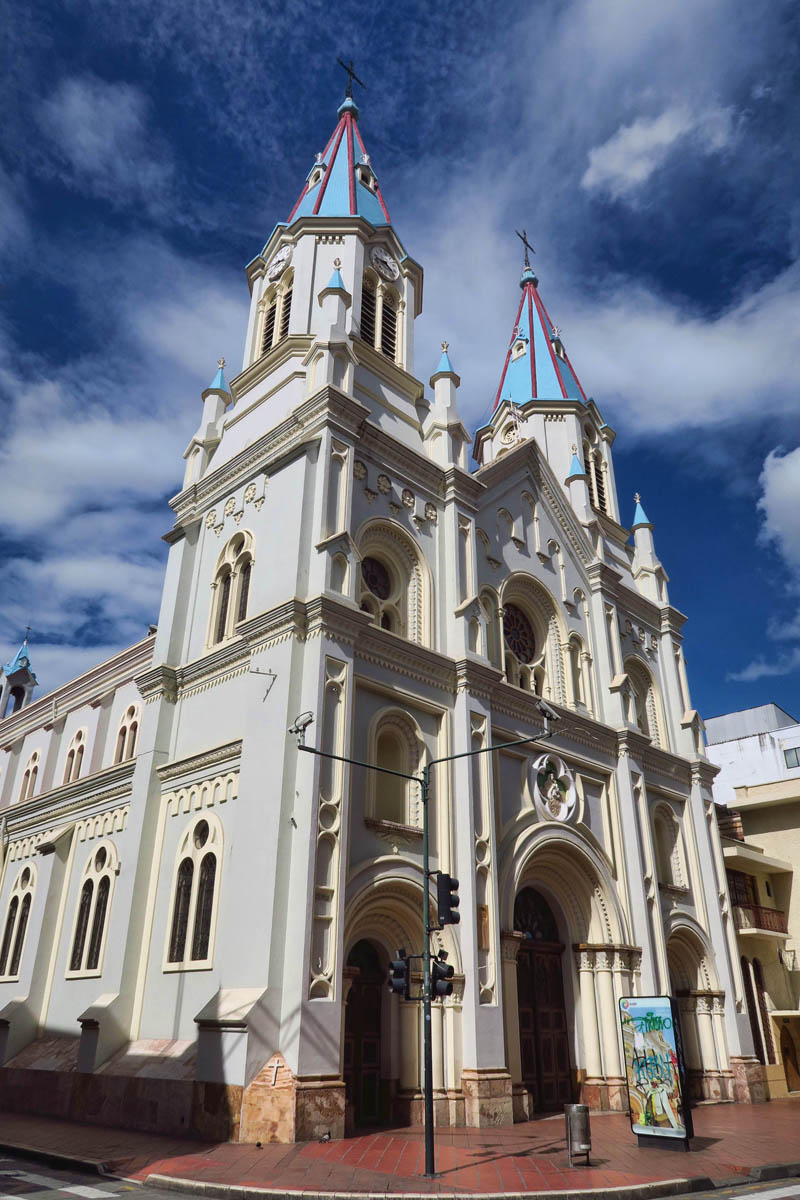

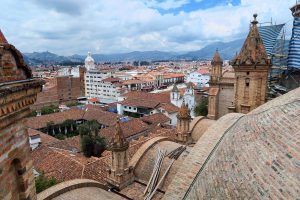







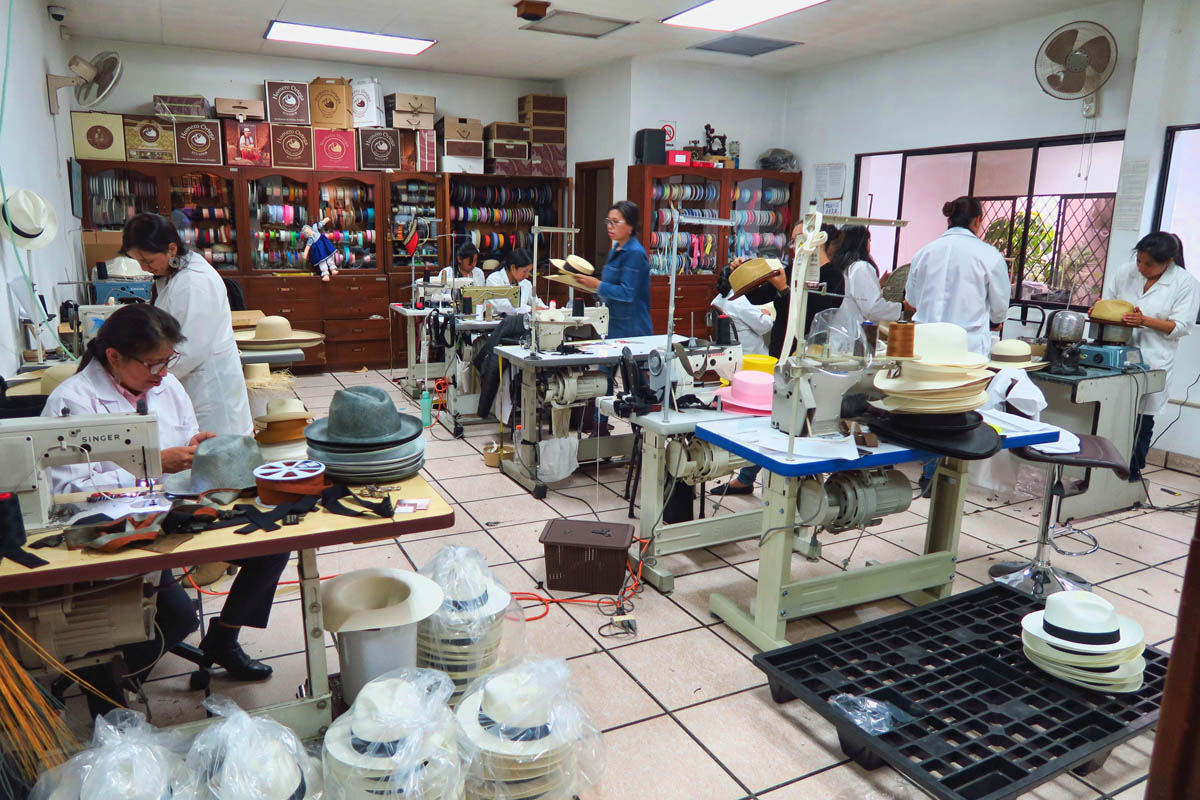
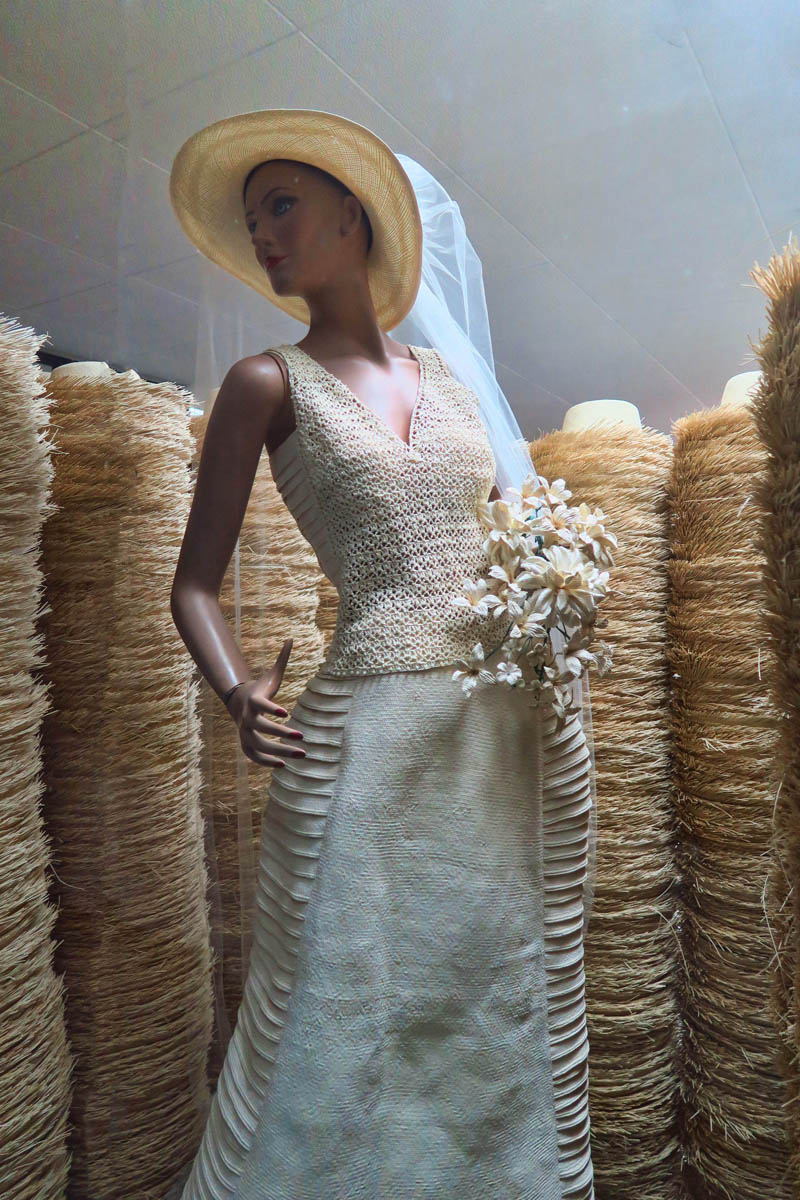

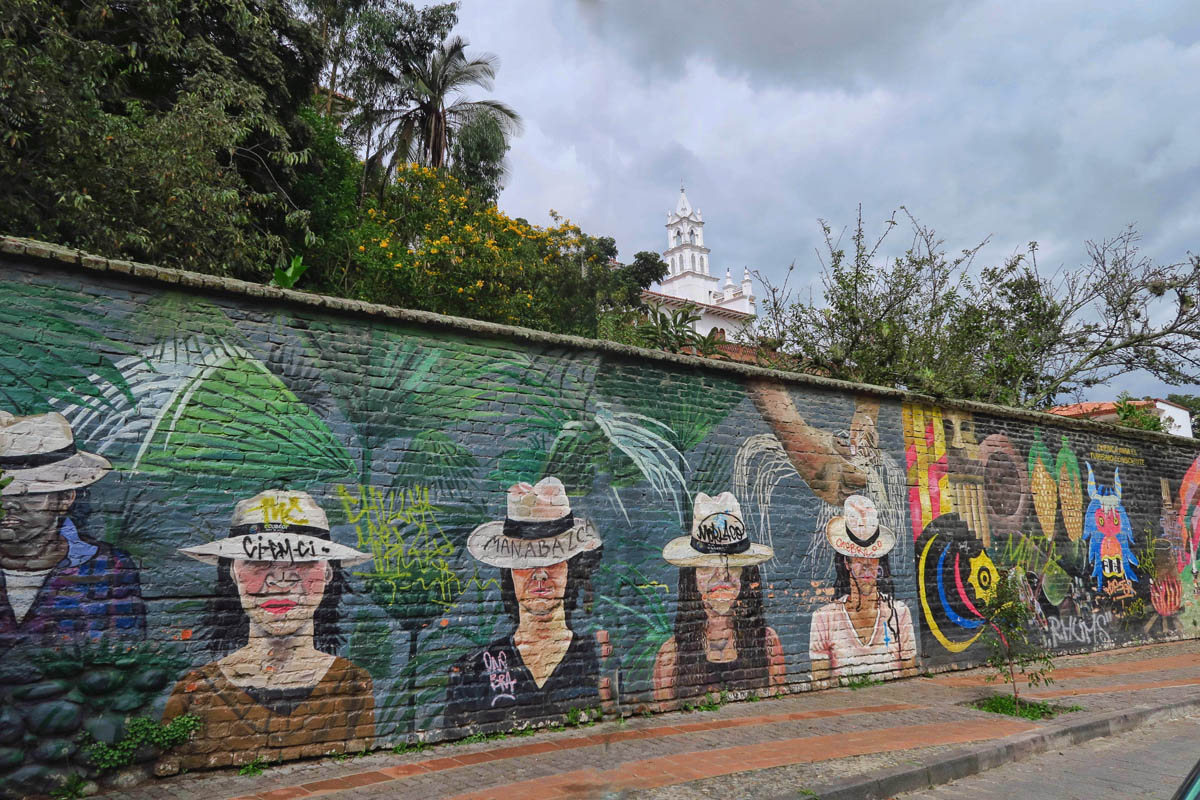
” It seems when one is an expatriate, the travel budget is spent returning back home to visit loved ones, take care of business, and resupply.” That depends on the expatriate and his or her chosen locale. We have no children or grandchildren and few other family. Neither the US nor Canada feels like “home” anymore. All of our “business” affairs are handled electronically & by phone. The only supplies I need that I can’t find in Guadalajara, Mexico are size 9.5N shoes, but obliging friends bring them south for me. I’ll do some tax-free shopping in Oregon this fall after visiting California for my 50th (eek!) high school reunion. But our next travel plans are for Costa Rica, Colombia, and Spain, interspersed with more exploration of Mexico.
Thanks, Deborah. I should have said “in this case,” rather than generalize, because I do know many expats who manage wonderful trips, both within and outside their country base. It was more of a “note to self” that if I should ever try expat living, I need to be sure and allow for a travel budget beyond trips back to the US in order to feed the beast that is wanderlust.
I think it’s likely a little harder to travel from a place like Ecuador than it is from Mexico, with its extensive luxury bus system and low cost carriers. Sounds like you have figured it out with your next travel plans, all to countries I have loved! Enjoy, and thank you for the comment.
You’re a great storyteller.
Very interesting insight from Carol. She gave viewpoints that one would never think of from the outside. The city itself looks interesting, one I would not mind visiting but not live there.
Interesting observations on the Ex-Pat lifestyle. There is something to be said for experiencing life in “phases”. For example, I feel I have had my “full time RV phase” and now I’m in my “rural living phase”, my next phase in perhaps 10 years might be something else. Unless a persons finances preclude it, one doesn’t have to be stuck in a single type of lifestyle forever.
I have never wanted to be an Ex-Pat, but I have cut the ties of living where I was raised as awesome as some of the local attributes are. The need Deede and I have to travel is compelling and so far we have so many places and trips to see in the USofA and Canada that their numbers far exceed our abilities to travel to them. There is nothing as satisfying as returning to home base to rekindle the travel spark. We envy, in the positive way, those who have the ability to carry their anchor with them. We feel badly for those with a permanent anchor and short chain.
As always your thoughts and descriptions fascinate us, thanks for sharing.
Very interesting post about ex-pats. We thought about it hard in 2016, but I think we’ve gotten too used to the ease of living in the US. I am impressed that you were able to remember all of this for as long as you did. I have enjoyed your travels very much, and thank you for showing it to us.
Thanks, Allison. In lieu of a laptop, I kept a hand-written journal. Otherwise, I couldn’t remember where I was yesterday!
One more point about being an expat that I didn’t see brought up here. My grandmother lived in San Miguel for many years during the 70’s & 80’s. Too many years it turned out. Her son and DIL, my parents, had a nightmare of an ordeal wrapping up her affairs in Mexico and moving her back to the US – including paying for a taxi from San Miguel to Mexico City because they couldn’t trust her not to start a riot on the bus – where she could get the care she needed for her final, befuddled years. (As a lifelong Catholic that took the ‘guilt’ to heart, she was so scared of dying she refused to do so for several years beyond expectations.)
At least in Mexico today, aging as an expat is not so daunting. I know that there are several assisted living and nursing care facilities in Ajijic at Lake Chapala, ordering care I English, probably some in SMA too.
Not quite sure how and when I byte wise stumbled across “Take To,” which I now deem a fortunate find. Your prose and photography create a fun browser read. I became a bigger fan when viewing the first pic of your View, having just parted with a Navion 24G…long story, health … and a segue to my latest RV, a traveling porta-potty, a Casita.
Your most recent series, Galapagos and Ecuador was most enjoyable as a trip to the islands is being planned with my son, an expat of double digit years in Quito and now Bahia . Sensing you from your posts, you would have enjoyed a layover at his hostel in Bahia … cocobongohostel.com. Also on Facebook.
Keep posting … well done ~ a verified happy reader
Grant
We had plans to travel to Spain and Portugal this fall, but because of our move and the expenses associated with furnishing a house again, we have postponed it. We will be doing some traveling in the fall, but I have to say that I feel like my wings have been clipped. We love our new community but the ideal time to move to AZ is not approaching summer. Although the timing wasn’t the best, we didn’t want to pass on the living arrangement. I still think about walking the Camino. Is it still on your bucket list?
Posts like this one, Suzanne, are always my favs! When you mix beautiful photos (The Cathedral of Immaculate Conception…ahhhhh!) with interesting tours (the factory of the Montecristi Hat…now right up there on my “gotta have” list) all wrapped up with a philosophical mindset (how wonderful to meet a new friend who can offer a peek into the ‘other’ side)…yes! You always fuel my desire to *not* feel like a permanent anchor with a short chain (thanks for that analogy, Allen). The *only* thing that could have put me over the edge of delight in this post would have been the addition of a close-up view of a luscious frosted class cocktail at sunset. 🙂